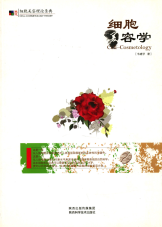
并列正书名: Cell-Cosmetology
主要责任者: 韦建学
责任方式: 著
出版者: 陕西出版传媒集团:陕西科学技术出版社
出版地: 西安
字数: 160 千字
页码: 1-155
开本: 16
中图分类号: ①TS974②R622
装帧: 简装
语种:中
定价:39.00
出版时间:2014-06
丛书多卷书否:是
丛书名:现代细胞美容理论圣典
书目简介:本册工具书是现代细胞美容理论圣典之一,共收录116条词条。
| 词条 | 细胞美容学 |
| 类别 | 中文百科知识 |
| 释义 |  并列正书名: Cell-Cosmetology 主要责任者: 韦建学 责任方式: 著 出版者: 陕西出版传媒集团:陕西科学技术出版社 出版地: 西安 字数: 160 千字 页码: 1-155 开本: 16 中图分类号: ①TS974②R622 装帧: 简装 语种:中 定价:39.00 出版时间:2014-06 丛书多卷书否:是 丛书名:现代细胞美容理论圣典 书目简介:本册工具书是现代细胞美容理论圣典之一,共收录116条词条。 |
| 随便看 |
开放百科全书收录579518条英语、德语、日语等多语种百科知识,基本涵盖了大多数领域的百科知识,是一部内容自由、开放的电子版国际百科全书。